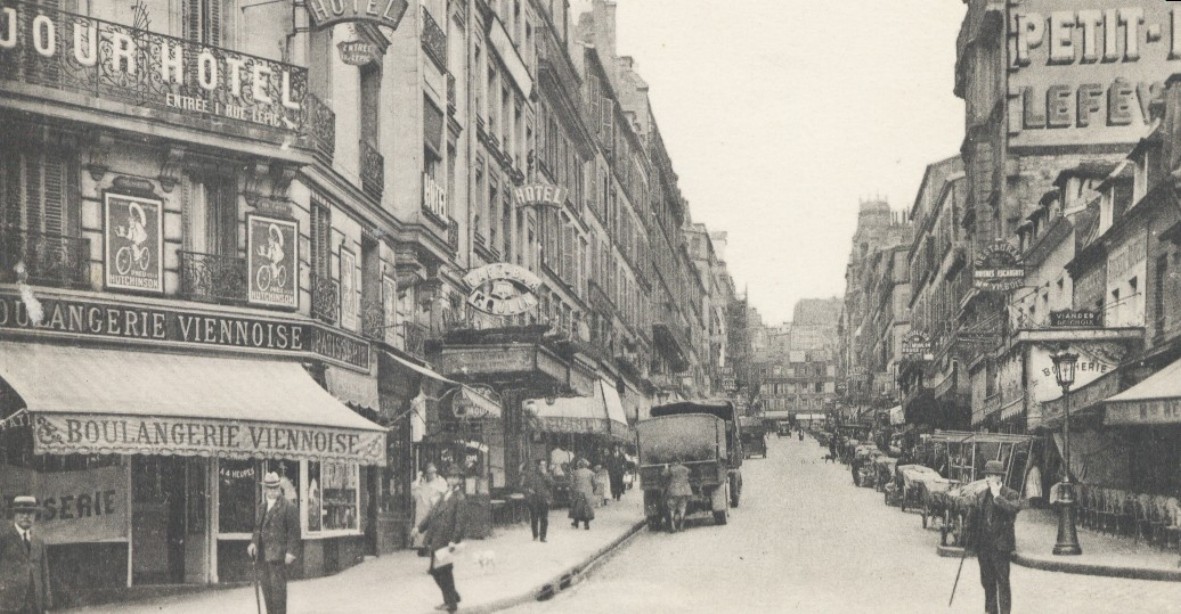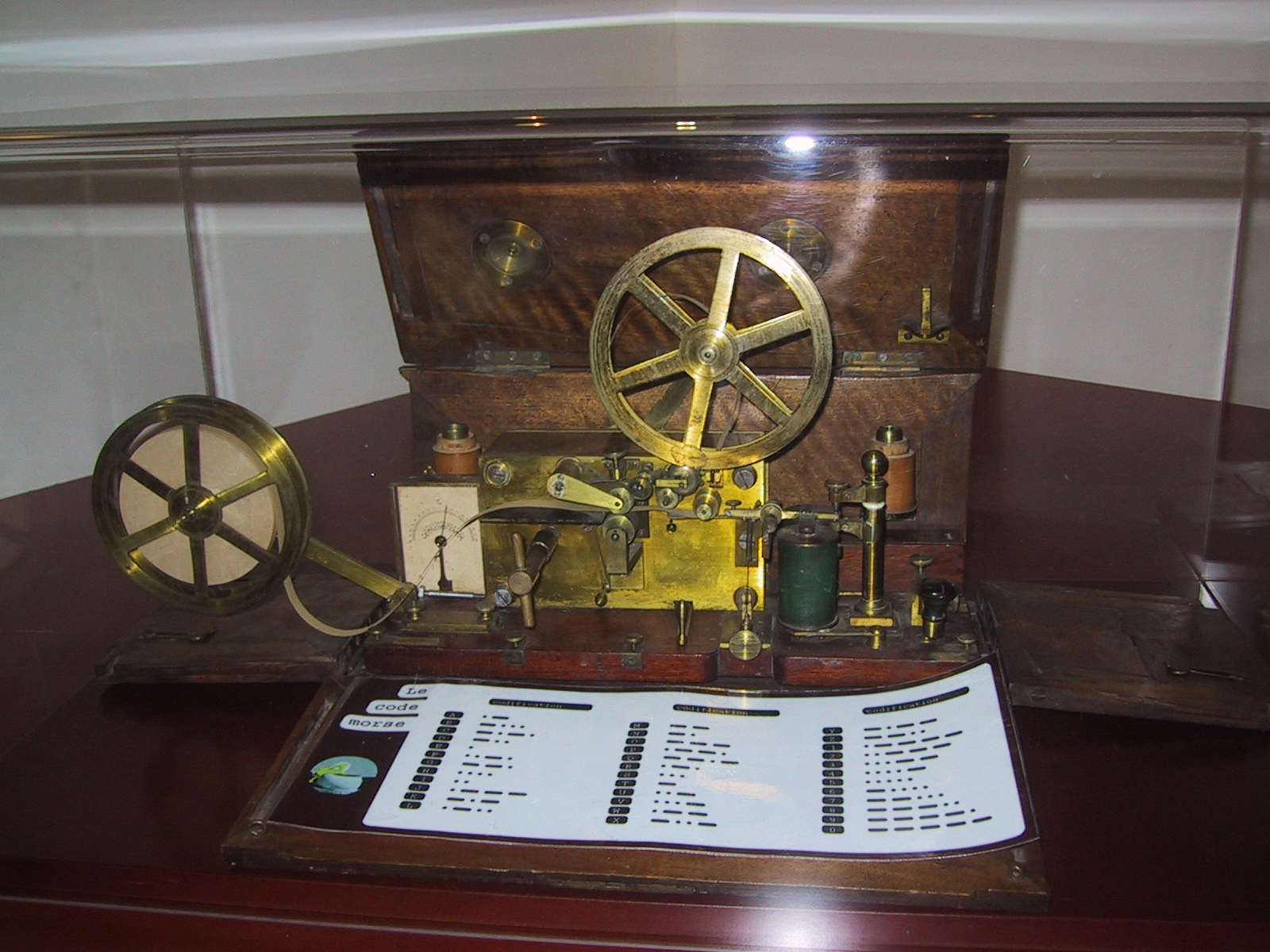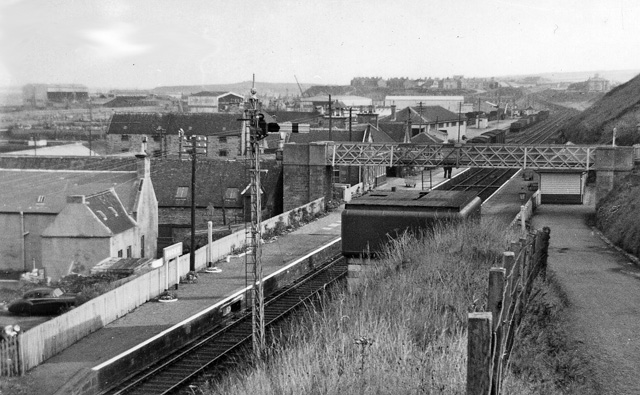|
William Dyce Cay
William Dyce Cay, MICE FRSE (28 March 1838 – 13 December 1925) was a Scottish civil engineer. He was responsible for the majority of late 19th century works to Aberdeen harbour. He was described by his cousin, James Clerk Maxwell, as a "watery engineer". Life He was born the son of Robert Dundas Cay, an Edinburgh lawyer, and Isabella Dyce (1811–1852). In 1844 the family moved to Hong Kong following his father's appointment as Registrar to the Supreme Court of that city. His mother died there as the result of injuries from a carriage accident in 1852 and is buried in the Happy Valley Cemetery in Victoria, Hong Kong. William returned to Edinburgh soon after this, to study mathematics at Edinburgh University, winning the prestigious Straiton Gold Medal in 1856. He then moved to Belfast to serve as an apprentice engineer under Lord Kelvin's brother, James Thomson. On completion of his training in 1858 he began to specialise in harbour design, and spent the bulk of his working ... [...More Info...] [...Related Items...] OR: [Wikipedia] [Google] [Baidu] |
FRSE
Fellowship of the Royal Society of Edinburgh (FRSE) is an award granted to individuals that the Royal Society of Edinburgh, Scotland's national academy of science and Literature, letters, judged to be "eminently distinguished in their subject". This society received a royal charter in 1783, allowing for its expansion. Elections Around 50 new fellows are elected each year in March. there are around 1,650 Fellows, including 71 Honorary Fellows and 76 Corresponding Fellows. Fellows are entitled to use the post-nominal letters FRSE, Honorary Fellows HonFRSE, and Corresponding Fellows CorrFRSE. Disciplines The Fellowship is split into four broad sectors, covering the full range of physical and life sciences, arts, humanities, social sciences, education, professions, industry, business and public life. A: Life sciences * A1: Biomedical and cognitive sciences * A2: Clinical sciences * A3: Organismal and environmental biology * A4: Cell and molecular biology B: Physical, enginee ... [...More Info...] [...Related Items...] OR: [Wikipedia] [Google] [Baidu] |
Benjamin Blyth
Benjamin Hall Blyth (14 July 1819 – 21 August 1866) was a Scottish civil engineer. Life Blyth was born at 26 Minto St in Newington, Edinburgh, the son of Robert Brittain Blyth, an iron merchant, and his wife, Barbara Cooper. He was their third son, and the first to survive to adulthood. Blyth had exceptional mental arithmetic skills. At the age of six, he astonished his father by mentally calculating the exact number of seconds he had lived since birth to that moment. In school, he stood out in performance, especially excelling in arithmetic, geometry, and algebra. Blyth was trained as a railway engineer under an apprenticeship with Grainger & Miller, a railway contractor. In 1848, he established an engineering practice on the prestigious George Street (at no 124) in Edinburgh where it would remain for the next 100 years. In 1854, after his brother Edward Lawrence Ireland Blyth finished his own apprenticeship with Grainger & Miller, Benjamin took him into partnership in ... [...More Info...] [...Related Items...] OR: [Wikipedia] [Google] [Baidu] |
People Associated With Aberdeen
The term "the people" refers to the public or common mass of people of a polity. As such it is a concept of human rights law, international law as well as constitutional law, particularly used for claims of popular sovereignty. In contrast, a people is any plurality of persons considered as a whole. Used in politics and law, the term "a people" refers to the collective or community of an ethnic group or nation. Concepts Legal Chapter One, Article One of the Charter of the United Nations states that "peoples" have the right to self-determination. Though the mere status as peoples and the right to self-determination, as for example in the case of Indigenous peoples (''peoples'', as in all groups of indigenous people, not merely all indigenous persons as in ''indigenous people''), does not automatically provide for independent sovereignty and therefore secession. Indeed, judge Ivor Jennings identified the inherent problems in the right of "peoples" to self-determination, ... [...More Info...] [...Related Items...] OR: [Wikipedia] [Google] [Baidu] |
1925 Deaths
Events January * January 1 – The Syrian Federation is officially dissolved, the State of Aleppo and the State of Damascus having been replaced by the State of Syria (1925–1930), State of Syria. * January 3 – Benito Mussolini makes a pivotal speech in the Italian Chamber of Deputies (Italy), Chamber of Deputies which will be regarded by historians as the beginning of his dictatorship. * January 5 – Nellie Tayloe Ross becomes the first female governor (Wyoming) in the United States. Twelve days later, Ma Ferguson becomes first female governor of Texas. * January 25 – Hjalmar Branting resigns as Prime Minister of Sweden because of ill health, and is replaced by the minister of trade, Rickard Sandler. * January 27–February 1 – The 1925 serum run to Nome (the "Great Race of Mercy") relays diphtheria antitoxin by dog sled across the U.S. Territory of Alaska to combat an epidemic. February * February 25 – Art Gillham records (for Columbia Re ... [...More Info...] [...Related Items...] OR: [Wikipedia] [Google] [Baidu] |
1838 Births
Events January–March * January 10 – A fire destroys Lloyd's Coffee House and the Royal Exchange, London, Royal Exchange in London. * January 11 – At Morristown, New Jersey, Samuel Morse, Alfred Vail and Leonard Gale give the first public demonstration of Morse's new invention, the telegraph. * January 21 – The first known report about the Lowest temperature recorded on Earth, lowest temperature on Earth is made, indicating in Yakutsk. * January 23 – A 1838 Vrancea earthquake, 7.5 earthquake strikes the Romanian district of Vrancea County, Vrancea causing damage in Moldavia and Wallachia, killing 73 people. * February 6 – Boer explorer Piet Retief and 60 of his men are massacred by King Dingane kaSenzangakhona of the Zulu people, after Retief accepts an invitation to celebrate the signing of a treaty, and his men willingly disarm as a show of good faith. * February 17 – Weenen massacre: Zulu impis massacre about 532 Voortrekkers, Khoikhoi and Sotho people, ... [...More Info...] [...Related Items...] OR: [Wikipedia] [Google] [Baidu] |
Robert Dyce
Professor Robert Dyce FRSE (1798–1869) was a Scottish surgeon and Professor of Midwifery at Aberdeen University. Life He was born in Aberdeen on 30 November 1798 the son of Dr William Dyce of Fonthill and Cuttlehill FRSE (1770–1835) and his wife Margaret Chalmers Dyce (1776–1856). His early years were spent at 48 Marischal Street. His younger brother was the artist William Dyce. His paternal uncle was General Alexander Dyce of the East India Company. He studied medicine at Aberdeen University with additional studies in both Edinburgh and London. He enlisted in the army at the Military Hospital at Chatham and joined the medical staff in Mauritius in 1821, also serving in the Cape of Good Hope until 1833. From 1833 to 1836 he worked in a military hospital at Maidstone in Kent. In 1836 he returned to Aberdeen as a GP, also lecturing in midwifery at the university from 1841. From 1860 until death he served as Professor of Midwifery at Aberdeen University. In 1864 he was el ... [...More Info...] [...Related Items...] OR: [Wikipedia] [Google] [Baidu] |
William Dyce
William Dyce (; 19 September 1806 in Aberdeen14 February 1864) was a Scottish painter, who played a part in the formation of public art education in the United Kingdom of Great Britain and Ireland, United Kingdom, and the South Kensington Schools system. Dyce was associated with the Pre-Raphaelite Brotherhood and played a part in their early popularity. Life Dyce was born on 19 September 1806 at 48 Marischal Street in Aberdeen, the son of William Dyce of Fonthill and Cuttlehill FRSE and Margaret Chalmers of Westburn. His uncle was General Alexander Dyce FRSE. His older brother was Robert Dyce FRSE. After studying at Marischal College, Dyce early showed an aptitude for design and began his artistic career at the Royal Academy schools in Edinburgh and London. He travelled to Rome for the first time in 1825, and while there he studied the works of Titian and Poussin. He returned to Aberdeen after nine months, and painted several pictures, including ''Bacchus nursed by the Nymp ... [...More Info...] [...Related Items...] OR: [Wikipedia] [Google] [Baidu] |
Lerwick
Lerwick ( or ; ; ) is the main town and port of the Shetland archipelago, Scotland. Shetland's only burgh, Lerwick had a population of about 7,000 residents in 2010. It is the northernmost major settlement within the United Kingdom. Centred off the north coast of the Scottish mainland and on the east coast of the Shetland Mainland, Lerwick lies boxing the compass, north-by-northeast of Aberdeen; west of the similarly sheltered port of Bergen in Norway; and south east of Tórshavn in the Faroe Islands. One of the list of coastal weather stations of the United Kingdom, UK's coastal weather stations is situated there, with Lerwick#Climate, the local climate having small seasonal variation due to the maritime influence. Being located further north than Saint Petersburg and three of the four mainland Scandinavia, Nordic capitals, and on the same latitude as Anchorage, Alaska, Lerwick's nights in the middle of summer only get dark twilight and winters have below six hours of comp ... [...More Info...] [...Related Items...] OR: [Wikipedia] [Google] [Baidu] |
Buckie
Buckie () is a burgh town (defined as such in List of burghs in Scotland, 1888) on the Moray Firth coast of Scotland. Counties of Scotland, Historically in Banffshire, Buckie was the largest town in the county until the administrative area was abolished in 1975. The town is the third largest in the Moray council area after Elgin, Moray, Elgin and Forres and within the definitions of statistics published by the General Register Office for Scotland was ranked at number 75 in the list of population estimates for settlements in Scotland mid-year 2006. Buckie is virtually equidistant to Banff, Aberdeenshire, Banff to the east and Elgin to the west, with both approximately distant whilst Keith, Moray, Keith lies to the south by road. Etymology The origin of the name of the town is not entirely clear. Although the folk etymology is that Buckie is named after a seashell (genus ''buccinum'') the shared marine background is most likely a coincidence. The name Buckie would not have origi ... [...More Info...] [...Related Items...] OR: [Wikipedia] [Google] [Baidu] |
Glenlair House
Glenlair, near the village of Corsock in the historical county of Kirkcudbrightshire, in Dumfries and Galloway, was the home of the physicist James Clerk Maxwell James Clerk Maxwell (13 June 1831 – 5 November 1879) was a Scottish physicist and mathematician who was responsible for the classical theory of electromagnetic radiation, which was the first theory to describe electricity, magnetism an ... (1831–1879). The original structure was designed for Maxwell's father by Walter Newall; Maxwell himself oversaw the construction of an extension in the late 1860s, and further improvements were made by his heir, Andrew Wedderburn-Maxwell. A fire in 1929 left the house gutted, but a project to preserve and stabilise the remains has been undertaken by the Maxwell at Glenlair Trust. References External links * Country houses in Dumfries and Galloway {{Scotland-struct-stub ... [...More Info...] [...Related Items...] OR: [Wikipedia] [Google] [Baidu] |
Kirkcudbrightshire
Kirkcudbrightshire ( ) or the County of Kirkcudbright or the Stewartry of Kirkcudbright is one of the Counties of Scotland, historic counties of Scotland, covering an area in the south-west of the country. Until 1975, Kirkcudbrightshire was an counties of Scotland, administrative county used for local government in Scotland, local government. Since 1975, the area has formed part of Dumfries and Galloway for local government purposes. Kirkcudbrightshire continues to be used as a registration county for land registration. A lower-tier districts of Scotland, district called Stewartry covered the majority of the historic county from 1975 to 1996. The area of Stewartry district is still used as a lieutenancy areas of Scotland, lieutenancy area. Dumfries and Galloway Council also has a Stewartry area committee. Kirkcudbrightshire forms the eastern part of the medieval lordship of Galloway, which retained a degree of autonomy until it was fully absorbed by Scotland in the 13th century. ... [...More Info...] [...Related Items...] OR: [Wikipedia] [Google] [Baidu] |
Portpatrick
Portpatrick is a village and civil parishes in Scotland, civil parish in the historical county of Wigtownshire, Dumfries and Galloway, Scotland. It is located on the west coast of the Rhins of Galloway. The parish is about in length and in breadth, covering . History Dating back some 700 years and built adjacent to the ruins of nearby Dunskey Castle, Portpatrick's position on the Rhins of Galloway affords visitors views of the Northern Irish coast to the west, with cliff-top walks and beaches both north and south. The Gulf Stream, flowing in from the north, gives the coastline a pleasant climate, in which subtropical plant life can flourish. Portpatrick has a Community Council, and an annual Life Boat Week, featuring parades, activities, and a firework display. There are bowls clubs, a golf club, many guesthouses and hotels, and rustic public houses. The village is also home to a mini putting course. By the inner harbour is the starting point of the Southern Upland Way, a ... [...More Info...] [...Related Items...] OR: [Wikipedia] [Google] [Baidu] |








